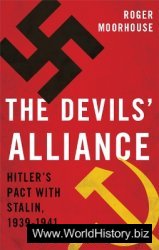At least 9 million persons were still without work in 1934 and hundreds of thousands of them were in real need. Malcolm Little, later famous as the radical black leader, Malcolm X, recalled 1934 as the worst year of the Great Depression. Then nine, he never had enough to eat. He and his friends would hang out near a bakery, where they could buy a sack of day-old bread and cookies for a nickel. But often, failing to scrape together even a nickel, they went without food all day. Then his mother pulled up some dandelions, boiled them in a pot, and served them for dinner.
Yet the Democrats confounded the political experts, including their own, by increasing their already large majorities in both houses of Congress in the 1934 elections. All the evidence indicates that most of the jobless continued to support the administration. Their loyalty can best be explained by Roosevelt’s unemployment policies.
In May 1933 Congress had established the Federal Emergency Relief Administration (FERA) and given it $500 million to be dispensed through state relief organizations. Roosevelt appointed Harry L. Hopkins, an eccentric but brilliant and dedicated social worker, to direct the FERA. Hopkins insisted that the unemployed needed jobs, not handouts. In November he persuaded Roosevelt to create the Civil Works Administration (CWA) and swiftly put 4 million people to work building and repairing roads and public buildings, teaching, decorating the walls of post offices with murals, and utilizing their special skills in dozens of other ways.
The cost of this program frightened Roosevelt— Hopkins spent about $1 billion in less than five months—and he soon abolished the CWA. But an extensive public works program was continued throughout 1934 under the FERA. Despite charges that many of the projects were “boondoggles,” thousands of roads, bridges, schools, and other structures were built or refurbished.
In May 1935 Roosevelt put Hopkins in charge of the Works Progress Administration (WPA). By the time this agency was disbanded in 1943 it had found employment for 8.5 million people. Besides building public works, the WPA made important cultural contributions. It developed the Federal Theatre Project, which put actors, directors, and stagehands to work; the Federal Writers’ Project, which turned out valuable guidebooks, collected local lore, and published about 1,000 books and pamphlets; and the Federal Art Project, which employed painters and sculptors. In addition, the National Youth Administration created part-time jobs for more than 2 million high school and college students.
At no time during the New Deal years did unemployment fall below 10 percent of the workforce, and in some places it was much higher. Unemployment in Boston, for instance, ranged between 20 and 30 percent throughout the 1930s. The WPA did not go far enough, chiefly because Roosevelt could not escape his fear of drastically unbalancing the budget. Halfway measures did not stimulate the economy.
The president also hesitated to undertake projects that might compete with private enterprises. Yet his caution did him no good politically; the business interests he sought to placate were becoming increasingly hostile to the New Deal.




 World History
World History









